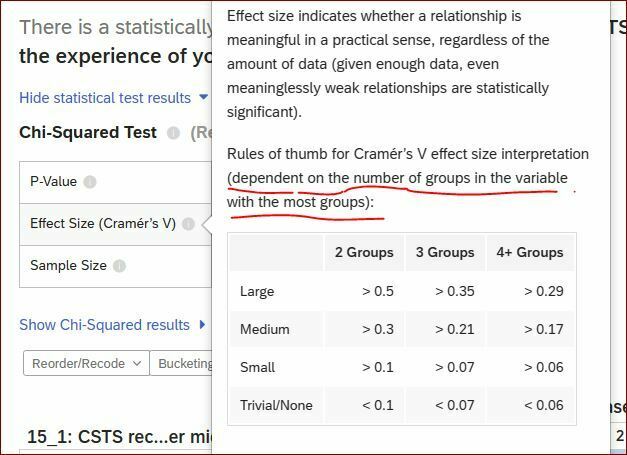I’m doing a basic relate series of tests in Stats iQ. My setting is “Order by results of “Relate” analyses by statistical significance and effect size.
I noticed today that it’s really “effect size” by which questions are ordered. So a question with a “strong statistically significant relationship” might come AFTER a question with simply a “statistically significant relationship”, based on the effect size.
All the tests are Chi-Squared (which I know nothing about ...) 🙄. The very first question has effect size .575, then it goes all the way to .311 which is also a “strong statistically significant relationship”.
I noticed that p values are < 0.00001 for all “strong statistically significant” questions, but still, the effect size determines the ordering of the questions.
My main question is - is there an effect size below which I can cut off when reporting to the user? All of my 17 questions have some statistical significance or some sort, so it doesn’t make sense to me to report all of them (given the nature of the survey).
The 17th question has effect size .237 (p-value .00578)
My take is to cut it off at effect size above .400, but this is just a guess, I can’t really give a statistical justification. In my case, it’s 6 questions.
.





